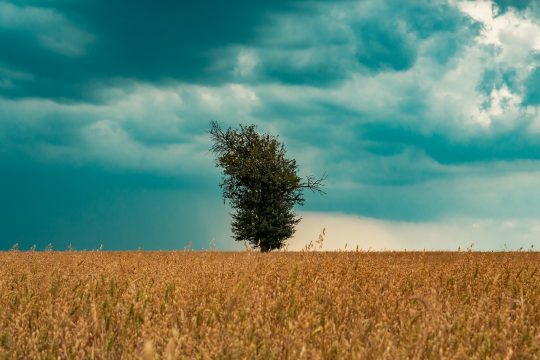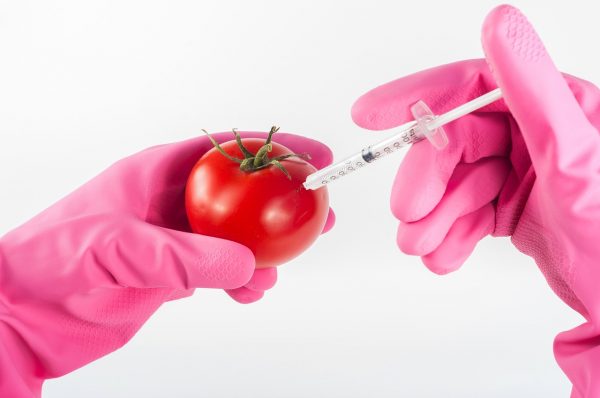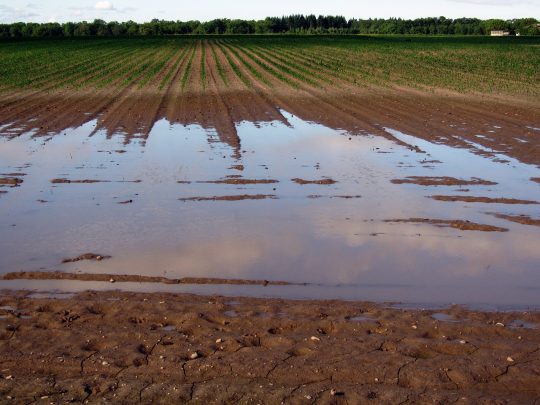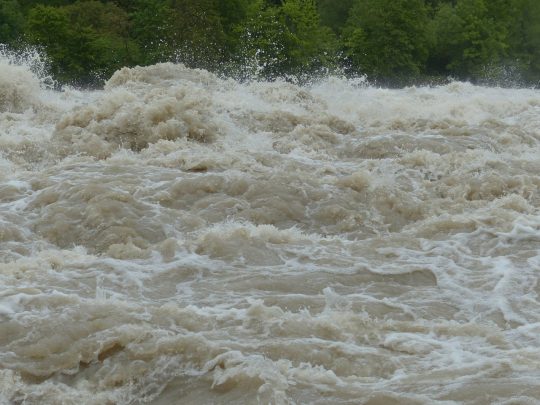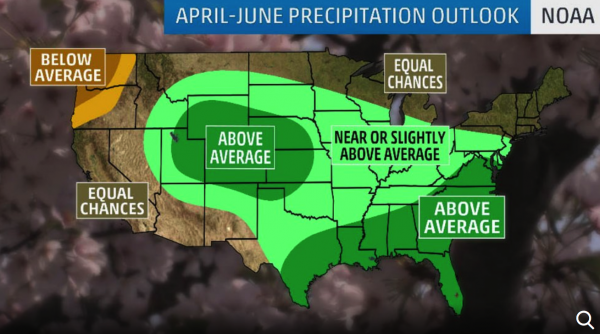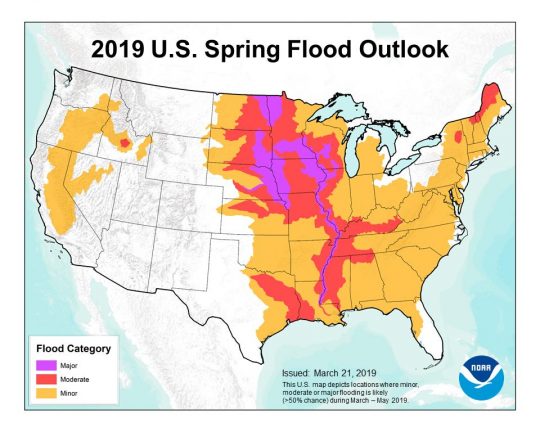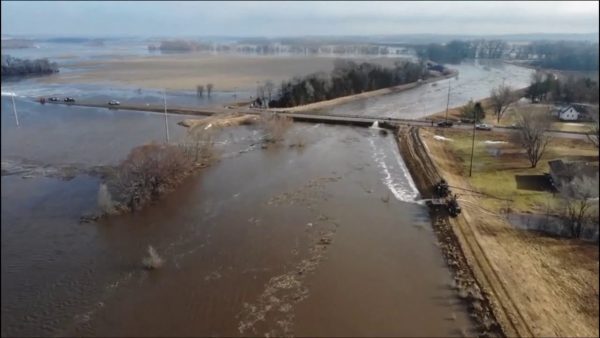Home » Posts tagged 'food' (Page 7)
Tag Archives: food
Crop Catastrophe In The Midwest – Latest USDA Crop Progress Report Indicates That A Nightmare Scenario Is Upon Us
Crop Catastrophe In The Midwest – Latest USDA Crop Progress Report Indicates That A Nightmare Scenario Is Upon Us
The last 12 months have been the wettest in all of U.S. history, and this has created absolutely horrific conditions for U.S. farmers. Thanks to endless rain and historic flooding that has stretched on for months, many farmers have not been able to plant crops at all, and a lot of the crops that have actually been planted are deeply struggling. What this means is that U.S. agricultural production is going to be way, way down this year. The numbers that I am about to share with you are deeply alarming, and they should serve as a wake up call for all of us. The food that each one of us eats every day is produced by our farmers, and right now our farmers are truly facing a nightmare scenario.
You can view the latest USDA crop progress report right here. According to that report, corn and soybean production is way behind expectations.
Last year, 78 percent of all corn acreage had been planted by now. This year, that number is sitting at just 49 percent.
And the percentage of corn that has emerged from the ground is at a paltry 19 percent compared to 47 percent at this time last year.
We see similar numbers when we look at soybeans.
Last year, 53 percent of all soybean acreage had been planted by now. This year, that number has fallen to 19 percent.
And the percentage of soybeans that have emerged from the ground is just 5 percent compared to 24 percent at this time last year.
In other words, we are going to have a whole lot less corn and soybeans this year.
Farmers in the middle of the country desperately need conditions to dry out for an extended period of time, but so far that has not happened.
…click on the above link to read the rest of the article…
Superbugs and the Ultimate Economic Weapon: Food
Superbugs and the Ultimate Economic Weapon: Food
The food-exporting superpowers are easy to identify.
As my esteemed colleague Michael Snyder chronicled in a recent Zero Hedge post, world agricultural production is under assault from extreme weather and diseases such as African swine fever. Floods & Drought Devastate Crops All Over The Planet; Is A Global Food Crisis Be Coming?
Everyone understands extreme weather is a danger to food production. The overuse of antibiotics is less well understood. As this article explains, most antibiotics are given to livestock, which then become breeding grounds for antibiotic-resistant microbes, which are known as superbugsonce they develop immunity to all conventional antibiotics.
Are antibiotics turning livestock into superbug factories?
Almost 80% of all antibiotics in the United States aren’t taken by people. They’re given to cows, pigs, and chickens to make them grow more quickly or as a cheap alternative to keeping them healthy. These drugs could give rise to superbugs—bacteria that can’t be treated with modern medicine—and things are only getting worse. In 2013, more than 131,000 tons of antibiotics were used in food animals worldwide; by 2030, it will be more than 200,000 tons.
Here’s the problem with superbugs: you can’t kill them with standard-issue antibiotics. They spread like wildfire through monoculture crops and livestock yards and kill with indiscriminate alacrity.
The only solution, poor as it is, is to kill every animal that might be infected–tens of millions or hundreds of millions in the case of African swine fever.
Pigs and chickens are breeding grounds for diseases that jump the low barrier between livestock and humans. So the superbug that starts out killing animals can, with generally modest genetic modifications via variability, start infecting and killing humans with the same alacrity.
Super scary: animal agriculture linked to global ‘superbug’ threat
How industrial farming techniques can breed superbugs
…click on the above link to read the rest of the article…
After Reading This Article About The Danger Of GMOs, You Will Probably Never Want To Eat Genetically-Modified Food Again
After Reading This Article About The Danger Of GMOs, You Will Probably Never Want To Eat Genetically-Modified Food Again
Every single day, most Americans eagerly gobble down foods that contain ingredients that have been genetically-modified without ever considering the consequences. Most of us simply assume that the federal government would never allow us to eat GMOs if they were not safe. Unfortunately, it appears that the federal government has completely failed us. The material that I am about to share with you is deeply disturbing, and after reading this article there is a very good chance that you will never want to eat genetically-modified food ever again. But at this point it is almost impossible to completely avoid GMOs, because they are in almost everything. Unless they are specifically designated “organic”, most corn, soy, canola and sugar beets grown in America today have been genetically modified, and almost all packaged foods contain ingredients derived from at least one of those sources.
We’ll get into some of the potential health effects of eating foods derived from GMO crops in a moment, but first I want to discuss a new trend that is potentially even more dangerous.
In recent years, researchers have been pushing the boundaries of biology in order to come up with new “plant-based” alternatives to existing food products. Essentially, “synthetic biology” is being used “to create life forms from scratch”…
Impossible’s “bleeding” veggie burger, shrimp made of algae, and vegan cheeses that melt are all making their way into restaurants and on to supermarket shelves, offering consumers a new generation of plant-based proteins that look, act, and taste far more like the real thing than ever before.
What consumers may not realize, however, is that many of these new foods are made using synthetic biology, an emerging science that applies principles of genetic engineering to create life forms from scratch.
…click on the above link to read the rest of the article…
Floods And Drought Devastate Crops All Over The Planet – Could A Global Food Crisis Be Coming?
Floods And Drought Devastate Crops All Over The Planet – Could A Global Food Crisis Be Coming?
It looks like global food production could be well below expectations in 2019, and that could spell big trouble in the months ahead. In recent weeks, I have written extensively about the problems that we have been experiencing here in the United States. As many as a million calves were lost to the flooding that hit the state of Nebraska in March, farmers have planted less than half of the corn that is normally in the ground by this time of the year, and a lot of the crops that have been planted in the middle of the country are really struggling due to extremely wet soil. But it isn’t just the United States that is facing a very troubling year. Earlier today, one of my readers sent me an article entitled “Global food crisis ahead as extreme weather events devastate crops and fields around the world”which I would encourage everyone to read. In that article, we are told that after the worst drought in 116 years Australia has actually been forced to import wheat. And according to the Guardian, this is the first time in 12 years that this has happened…
Australia is planning to import wheat for the first time in 12 years after drought across the eastern states saw grain production fall 20% last year.
The Department of Agriculture and Water Resources confirmed this week it had issued a bulk import permit to allow wheat to be brought in from Canada to be processed for the domestic market.
…click on the above link to read the rest of the article…
Total Catastrophe For U.S. Corn Production: Only 30% Of U.S. Corn Fields Have Been Planted – 5 Year Average Is 66%
Total Catastrophe For U.S. Corn Production: Only 30% Of U.S. Corn Fields Have Been Planted – 5 Year Average Is 66%
2019 is turning out to be a nightmare that never ends for the agriculture industry. Thanks to endless rain and unprecedented flooding, fields all over the middle part of the country are absolutely soaked right now, and this has prevented many farmers from getting their crops in the ground. I knew that this was a problem, but when I heard that only 30 percent of U.S. corn fields had been planted as of Sunday, I had a really hard time believing it. But it turns out that number is 100 percent accurate. And at this point corn farmers are up against a wall because crop insurance final planting dates have either already passed or are coming up very quickly. In addition, for every day after May 15th that corn is not in the ground, farmers lose approximately 2 percent of their yield. Unfortunately, more rain is on the way, and it looks like thousands of corn farmers will not be able to plant corn at all this year. It is no exaggeration to say that what we are facing is a true national catastrophe.
According to the Department of Agriculture, over the past five years an average of 66 percent of all corn fields were already planted by now…
U.S. farmers seeded 30% of the U.S. 2019 corn crop by Sunday, the government said, lagging the five-year average of 66%. The soybean crop was 9% planted, behind the five-year average of 29%.
Soybean farmers have more time to recover, but they are facing a unique problem of their own which we will talk about later in the article.
…click on the above link to read the rest of the article…
“The Story of Soil Is the Story of All of Us”
“The Story of Soil Is the Story of All of Us”
Annie Leonard and Tom Newmark on how they came to see soil as a solution to one of our biggest environmental problems—and as a tool to build more resilient communities.

Wendell Berry called it “the great connector of our lives, the source and destination of all.” Ninety-five percent of our food is grown in it, it stores and filters our water and provides a home for the majority of life on the planet, and yet most of us rarely pay much attention to it. We dump poisonous chemicals on it, inject it with synthetic nutrients, slash it with plows, strip it of its natural diversity, and bury our trash in it.
But soil has a story to tell us, and we are all a part of it.
For as long as humans have engaged in agriculture, and even before, we’ve relied on healthy soil and the organisms it supports. And for most of that time, we’ve cultivated good soil. Early societies developed food production systems that actually enhanced soil fertility and food abundance, such as with “terra preta,” or Amazonian dark earth, and the food forests of the Mayans. We planted, harvested, and consumed but also took care to nourish and regenerate.
What changed? At some point, humans started relating to the planet differently, and our emotional and spiritual connection to the earth was severed. Whether the shift happened during the Neolithic Revolution, when humans settled and established agriculture, or the Age of Enlightenment, when nature became viewed as an object to be observed and controlled, the result was a disconnect from nature. We became, in the words of Daniel Quinn in his book Ishmael, “Takers” and not “Leavers.”
…click on the above link to read the rest of the article…
Post-Brexit Farming, Glyphosate and GMOs
Post-Brexit Farming, Glyphosate and GMOs
The following is an edited and abridged version of an open letter recently sent by Dr Rosemary Mason to Michael Gove, the British Secretary of State for Environment, Food and Rural Affairs. The full version containing relevant citations and additional data and information may be accessed here.
You can also find on the site linked to all of Rosemary Mason’s previous work outlining the devastating impact of glyphosate and modern farming practices which remain in place due to the well-documented subversion of science and the corruption of governments and regulatory bodies by industry interests.
It seems likely that a post-Brexit trade deal with the US could mean more of the same and lead to the introduction of GM crops in the UK alongside the lowering of standards for the use of biocides in agriculture. Sainsbury Laboratory already has plans for a new open air field trial of GM potatoes on farms in Suffolk and Cambridge.
Below, Dr Mason lays out her concerns to Mr Gove.
***
Dear Michael Gove,
I am surprised to learn that from the huge number of scientists employed by the Department for Environment, Food and Rural Affairs (Defra) and Rothamsted Research (research institute involved in developing and testing GM crops) that not one of them has read the new book by Caius Rommens, former team leader at Monsanto. He helped create GM potatoes and has retracted his research as he explains in the book ‘Pandora’s Potatoes: The Worst GMOs’.
Professor Jonathan Jones, group leader for the Sainsbury Laboratory has worked for Monsanto in the past, so he has massive conflicts of interest.
It all shows an ignorance beyond belief!
In an interview with Sustainable Pulse, Caius Rommens has revealed the hidden dangers of the GMO potatoes he created:
…click on the above link to read the rest of the article…
Five dollars is not enough for five a day
Five dollars is not enough for five a day
In discussions about food, environment and health, a resource perspective is often lacking. For more than half of the global population what ends up on their plate is mostly a function of their economic and energetic circumstances. If one want to change what people eat it is necessary to understand the realities of the global food system. Without that, all well-intended advice for a diet better for health or for the environment are falling on barren rock instead of in fertile ground.
The WHO says that 3.9 million deaths could be avoided if people ate more fruit and vegetables. The recent report of the EAT Lancet Commission recommends that people should eat at least 500 gram fruit and vegetables per day. Many countries have similar recommendations of a certain quantity in weight or in number of servings or portions. But in almost no country are people doing what they are told. In Sweden only 1 percent of the men in rural Arjeplog eat their half a kilo per day while 19 percent of the women in wealthy, urban Täby does it. Are people stupid or what?
In order to understand fruit and vegetables consumption it is essential to realize some pertinent facts. Fruits and vegetables are mostly luxury plants in comparison with grains, pulses, root crops. Very few traditional farming systems have had a high share of fruits and vegetables unless you include starchy crops like plantains, potatoes, cassava or yams in your definition. The reason for it is that they are fairly demanding to grow and their content of the most essential food components, energy and protein, is low. Even today, fruits and vegetables are expensive to buy.
…click on the above link to read the rest of the article…
ANOTHER “Bomb Cyclone” Will Bring More Flooding To Parts Of The Midwest That Were Hit By A “1,000 Year Flood” Last Month
ANOTHER “Bomb Cyclone” Will Bring More Flooding To Parts Of The Midwest That Were Hit By A “1,000 Year Flood” Last Month
Less than a month after a “bomb cyclone” caused a “1,000 year flood” in the middle portion of the country, another “bomb cyclone” of similar strength is going to bring even more flooding to the High Plains and Upper Midwest. According to meteorologists, it is being projected that this new “bomb cyclone” will be “similar in intensity and in snowfall” to the last one, and the latest forecast is calling for “more than 30 inches in some areas”. The floods that we witnessed last month absolutely devastated communities throughout the region, and now it is going to happen again. The middle part of our nation has literally never seen anything like this happen ever before, and this is easily the worst natural disaster to hit the United States since Hurricane Katrina.
Before I get into the details of the latest weather forecast, let’s review what we have witnessed so far. “At least 1 million acres of U.S. farmland” were under water for at least 7 days last month, according to Agriculture Secretary Sunny Purdue “as many as a million calves” were lost in the flooding in the state of Nebraska alone, and hundreds of millions of dollars worth of crops were destroyed. Thousands upon thousands of farmers were financially ruined, and thousands of farmers will not be able to plant any crops at all this year.
If you can point out a worse agricultural disaster in the last 50 years in the United States, please feel free to do so. To my knowledge, there isn’t one.
And now a second “bomb cyclone” is on the way this week. According to CBS News, it looks like this “bomb cyclone” will produce “a blizzard of epic proportions”…
…click on the above link to read the rest of the article…
100s Of Millions Of Dollars In Crops Destroyed By Flooding, And Farmers Are Being Told “There’s Nothing The U.S. Government Can Do To Help”
100s Of Millions Of Dollars In Crops Destroyed By Flooding, And Farmers Are Being Told “There’s Nothing The U.S. Government Can Do To Help”
This is the worst economic disaster for U.S. farmers in modern American history. Our ongoing trade war with China had greatly depressed prices for wheat, corn and soybeans, and so farmers were storing more crops on their farms than ever before in early 2019. And then the floods came. The water moved so fast that the vast majority of the farmers in the affected areas could not have moved what they had stored even if they wanted to, and the scale of the losses that these farmers have suffered is starting to become clearer. According to UPI, “hundreds of millions of dollars in crops” that were destroyed by the flooding were not covered by insurance…
Hundreds of millions of dollars in crops destroyed in Midwestern floods this month were not insured, farmers say. And the losses could leave many without sufficient income to continue farming.
“This uninsured grain issue is really starting to affect people,” said Jeff Jorgenson, a western Iowa corn and soy grower whose farm flooded when the Missouri River spilled over its banks March 12.
Without an extraordinary amount of assistance, there are thousands of farmers that will never be able to come back from this.
One fifth-generation farmer that was interviewed by Fox News said that about 7 million dollars worth of grain was destroyed in his county alone…
Dustin Sheldon, a fifth-generation grain and soybean farmer, watched in horror as the floods that devastated the Midwest began to recede and he could assess the damage to his crops.
He said the record-breaking floods caused about $1 million in losses for his family farm.
…click on the above link to read the rest of the article…
Food for a small planet

Food for a small planet
What do people eat across the world? An excellent photographic answer to this question was provided by Californian photographer Peter Menzel who visited 24 countries for the book “Hungry Planet” . The thing I found most interesting from his photographs was the difference in the percentage of whole food vs. processed food that make up diets across the world. Americans eat mostly processed food and very little whole food.


The first book I read about the connections between agriculture, government, food, health, and the environment was “Diet for a small planet” written by Frances Moore Lappe in 1971. I woke up to the reality of food production and converted for a time to a vegetarian diet. Eventually I settled on my preferred diet which includes smaller amounts of high quality meat along with mostly fresh plant based food; vegetables, fruit, dried legumes, grains, nuts and seeds. I changed my diet because I wanted to eat food that was better for my health and better for the environment. There is a reason why obesity has become an epidemic in America, it is because of the food we eat. Compare the difference between an American and a European lunch. The Italian lunch contains more whole foods and more importantly less sodium and high fructose corn syrup.
I learned to cook from my mother and grandmother but I learned to cook vegetarian meals as an adult. My mother and grandmother had grown up on a small family farm where most of their food was produced, all of it high quality.
…click on the above link to read the rest of the article…
“As Many As A Million Calves Lost In Nebraska” – Beef Prices In The U.S. To Escalate Dramatically In The Coming Months
“As Many As A Million Calves Lost In Nebraska” – Beef Prices In The U.S. To Escalate Dramatically In The Coming Months
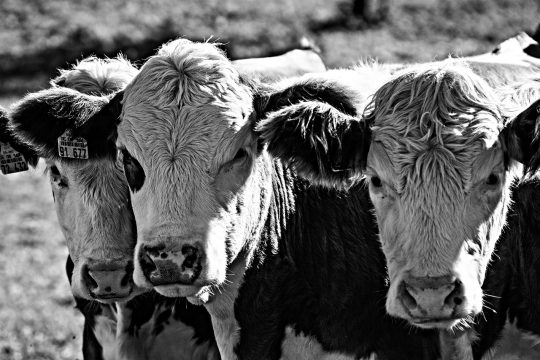
According to Agriculture Secretary Sunny Purdue, there “may be as many as a million calves lost in Nebraska” due to the catastrophic flooding that has hit the state. This is not a rumor, this is not an exaggeration, and this is not based on any sort of speculation. This number comes to us directly from the top agriculture official in the entire country, and it means that the economic toll from the recent floods is far greater than most of us had anticipated. You can watch Purdue make this quote on Fox Business right here, and it is important to remember that this number is just for one state. It is hard to imagine what the final numbers will look like when the livestock losses for all of the states affected by the flooding are tallied up. This is already the worst agricultural disaster in modern American history, and the National Weather Service is telling us that there will be more catastrophic flooding throughout the middle portion of the nation for the next two months.
Nebraska Governor Pete Ricketts says that this is the worst flooding that his state has ever experienced. Ricketts originally told us that 65 out of the 93 counties in his state have declared a state of emergency, but that number has now risen to 74. Hundreds of millions of dollars of damage has been done in his state alone, and that is just an initial estimate.
It deeply offends me that the big mainstream news channels have spent so little time covering this disaster. This is the biggest news story of 2019 so far by a very wide margin, but because it happened in the middle of the country they are not giving it the attention that it deserves.
…click on the above link to read the rest of the article…
200 Million People At Risk: National Weather Service Warns Apocalyptic Midwest Floods Are “A Preview Of What We Expect Throughout The Rest Of The Spring”
200 Million People At Risk: National Weather Service Warns Apocalyptic Midwest Floods Are “A Preview Of What We Expect Throughout The Rest Of The Spring”
The flooding that just struck the middle part of the country was the worst blow to U.S. farmers in decades, but now the National Weather Service is telling us that it was just “a preview of what we expect throughout the rest of the spring”. Can that possibly be true? After the immense devastation that we have already witnessed, how much worse can the flooding possibly get? Already we have seen thousands of homes and farms be completely destroyed, and we are being told that the total economic damage is in the billions of dollars. Sadly, the truth is that a lot worse is still yet to come. Thanks to a very snowy winter, a massive amount of snow is going to melt during the next several weeks, and that alone would produce tremendous flooding. But on top of all of that melting snow, forecasters are telling us that it will be a very rainy spring. In fact, the Weather Channel is warning that there will be “above-average precipitation across much of the Lower 48” over the next three months, and one meteorologist is forecasting that it is “not looking like we are going to see any dry stretches anytime soon”. And this is on top of all of the very heavy rainfall that has been falling in recent weeks. At this point, the Mississippi River basin has already gotten “three times as much rainfall as in a normal year”.
Even without any additional flooding, U.S. food production would be way down this year. The recent flooding is going to keep thousands of farmers from planting crops on time, and thousands of others are not going to be able to use their fields at all.
…click on the above link to read the rest of the article…
Government Warns Of Historic, Widespread Flooding “Through May” – Food Prices To Skyrocket As 1000s Of Farms Are Destroyed
Government Warns Of Historic, Widespread Flooding “Through May” – Food Prices To Skyrocket As 1000s Of Farms Are Destroyed
We have never seen catastrophic flooding like this, and the NOAA is now telling us that there will be more major flooding for at least two more months. On Thursday, the National Oceanic and Atmospheric Administration warned that “historic, widespread flooding” would “continue through May”. More than 90 percent of the upper Midwest and Great Plains is currently covered by an average of 10.7 inches of snow, and all of that snow is starting to melt. That means that we are going to transition from one of the worst winters in modern history to a flood season that has already taken an apocalyptic turn for farmers all across America. At this moment, millions of acres of farmland are already underwater. Thousands of farmers are not going to be able to plant crops this year, and thousands of other farmers that have been financially ruined by the floods will never return to farming again. This is already the worst agricultural disaster in modern American history, and it is going to get a whole lot worse.
I posted an article about this crisis yesterday, and I am troubled by the fact that most Americans don’t seem to understand the gravity of what we are facing.
Millions of bushels of wheat, corn and soybeans have been destroyed by flood waters, hundreds of millions of dollars worth of livestock have been lost, and all of us will soon be feeling a lot more pain at the grocery store.
And this would be a complete and utter national nightmare even if the flooding was all over, but the NOAA just told us that we should expect more catastrophic flooding for the next two months…
…click on the above link to read the rest of the article…
Catastrophic Flooding In The Midwest Could Last “For Months”, And That Is Going To Mean A Dramatic Drop In U.S. Food Production
Catastrophic Flooding In The Midwest Could Last “For Months”, And That Is Going To Mean A Dramatic Drop In U.S. Food Production
The worst flooding disaster in the history of the Midwest is just getting started, and as this crisis unfolds we are all going to be feeling the pain. The “bomb cyclone” that recently brought hurricane-force winds and blizzard conditions to the middle of the nation was the spark that set off this catastrophic flooding, and now all of the snow from one of the snowiest winters in decades is going to be feeding into rivers that have already shattered all-time flood records. As you will see below, most of the Great Plains and Upper Midwest is currently covered by more than 10 inches of snow, and all of that water has to go somewhere. As all of that snow melts, we are going to witness an agricultural disaster that is far beyond anything that we have ever seen before in modern American history.
If you think that I am exaggerating even a little bit, please read this article all the way to the end.
As I did research for this article, I was floored by the immense devastation that has already taken place. But if the crisis was over, at least farmers could start picking up the pieces.
Unfortunately, the crisis is not over. In fact, Iowa Governor Kim Reynolds is saying that we are “just getting started”. The following comes from a USA Today article entitled “‘It looked like an ocean’: Severe Midwest flooding could last all spring”…
Gov. Kim Reynolds is warning Iowans what millions of Midwesterners have come to understand in recent days – the severe flooding that has swamped much of the regionmay be a long way from over.
…click on the above link to read the rest of the article…


